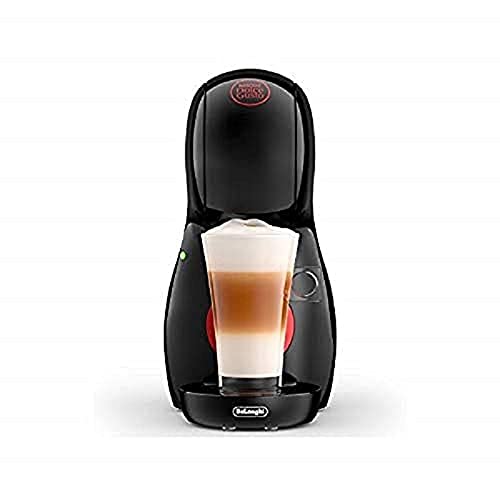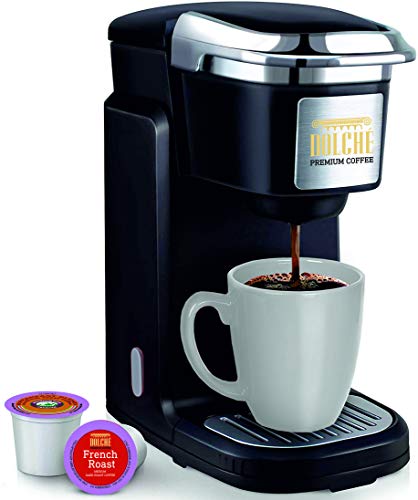Five Killer Quora Answers On Pod-Making Machines
페이지 정보

본문
 Detergent Pod-Making Machines
Detergent Pod-Making Machines There are many different pod coffee machines for pods to choose from, ranging from K-Cup (r) and Tassimo (tm) to Nespresso (tm) or Senseo(tm). Each pod coffee machine for pods machine works the same way, by heating water and pressing buttons.
There are many different pod coffee machines for pods to choose from, ranging from K-Cup (r) and Tassimo (tm) to Nespresso (tm) or Senseo(tm). Each pod coffee machine for pods machine works the same way, by heating water and pressing buttons.The pod-making procedure is more complex, but still easy enough to complete by yourself. Here are a few things to look for when you buy a pod-making equipment:
Detergent Pod Manufacturing
Detergent pods are convenient and efficient, as well as environmentally friendly. But how do they get them? The process is quite simple. A single-dose capsule coffee machines contains an insoluble film that dissolves when in contact with water. This film is usually made of polyvinyl alcohol, which dissolves easily in water and doesn't leave any residue on clothing. The detergent formula also contains chelating agents that soften hard water, decrease the degradation of detergents and optical brighteners for whites.
The sachets are then sprayed with seals to protect the contents from moisture and contamination during storage, transport and use. Laundry pod manufacturers use high-speed production techniques to keep up with demand. They can produce between 240 and 600 pods per minute, ensuring that the product is delivered within the timeframes set by the manufacturer.
While many of these products are manufactured by third-party companies, Tide makes some of its own pods. The company uses only high-quality ingredients made in the US and does not import cheaper alternatives. It also is able to verify and trace its raw materials.
A machine for making laundry pods includes a product hopper that keeps liquid detergent in storage until it's used. Then, a precisely-sized dispenser fills each pod with precisely measured amounts of detergent. The machine then seals each pod. The machine's patent-pending design protects the film's water-soluble properties, while routine inspections maintain 0.02ml filling accuracy.
The films of Pod also contain minor ingredients, like denatonium which gives them a bad flavor and helps to repel liquids. For instance, MonoSol uses Bitrex, the quaternary ammonium compound referred to as denatonium. This chemical is so bitter, it can repel people in levels as low as 0.01%. It also discourages pets and children from putting sachets of the chemical in their mouths.
When you are not using your laundry pods store them away from children and pets. By keeping them away from light and moisture it will prevent their ingredients from degrading too fast. Proper storage conditions will also extend the life of the detergent. Also, ensure that you remove laundry pods from the premises after use.
Detergent Packaging of Pods
Detergent pods have become a craze that is stealing market share in laundry and dishwasher detergents as well as personal care products like shampoo. They contain a concentrated mixture of surfactants and other cleaning ingredients that are contained in a water-soluble film. They are simple to use, store and are a safer alternative to liquid cleaners.
Pods are not like traditional detergent containers made of PET plastic, which could contain harmful chemicals such as 1,4 dioxane. Instead, they have a cocktail harsh chemicals enclosed in a polyvinyl alcohol film. These chemicals may differ based on the brand. They could include bleaches and surfactants aswell in optical brighteners, solvents or enzymes. These ingredients are disclosed on the websites of manufacturers.
The PVA used in the film to encase the pods is biodegradable, and is listed on the Environmental Protection Agency's CleanGredients database. It also has the Nordic Swan Eco-label, which is among the most stringent independent ecolabels. The EPA notes it can be broken into simple, natural compounds that are found in soils and wastewater plants.
Laundry pods are an extremely popular alternative to liquid detergents and a variety of brands offer various product choices, including basic laundry detergents to fabric softeners and stain removers. According to a Nohbo study in the US, laundry pods account for 15% of household soap sales.
Most pods contain a single dose, but some also contain fabric softeners and stain removers, as well in scent boosters. Many manufacturers also add anti-bacterial properties to the detergent to help fight bacteria.
Despite their convenience However, some have complained that laundry pods aren't able to dissolve completely. This can be a result of overfilling the washer tub, using water that is cold, or by adding the pods too early in the cycle. It can also happen when the user fails to read the instructions carefully because the pods require the right temperature and pressure to dissolve properly.
They are not toys. Therefore, people should keep them in a secure place and keep them out of reach of children. Also, they must be cleaned of their contents prior to putting them in the washing machine or dishwasher. The resulting packaging should be recycled as quickly as possible to prevent pollution and reduce waste.
Detergent Filling Pods
Laundry pods have become a huge sensation in household cleaning products, and are fast gaining ground over traditional liquid detergents. The cute little packets are convenient, easy to use and don't require any measuring. They also come in different sizes and strengths. Based on the type of laundry you use you can select between single-dose pods and multi compartment pods or even powder detergent.
The thin film that surrounds pods is the key to their success. It needs to keep its shape while holding chemically active liquids and solids, but must dissolve quickly and completely in water, even cold water. Many firms have landed on a polymer called PVA that has both of these properties. The rest of the pod is made up of powerful detergents, bleaches and solvents. It also has optical brighteners, preservatives, enzymes and preservatives. Manufacturers usually disclose the ingredients of their detergents.
In contrast to powder and liquid detergents, which are packed in high-density plastic pods are made from polymers made from plants that can be broken down by microbes in the ocean or soil. According to scientists from the Woods Hole Oceanographic Institution, PVA is broken down in less than 70 days in the sewage sediment. This is significantly faster than conventional detergents, which can take hundreds of years to break down.
While laundry pods have revolutionized the way we wash clothes but they do have their flaws. For instance, they're more expensive than liquid and powder detergents. If you happen to accidentally lick the pod, you will be greeted by an unpleasant taste as well as burning chemically.
Another drawback is that they're not as flexible as traditional detergents. The laundry pods are limited to the wash cycle listed on the packaging. This could be an issue for front-loading and top-loading washers that come coffee machines with capsules an automatic detergent dispensers and fabric softeners. If your washer has an motorized agitator, the pods might not dissolve properly.
If you're interested in experimenting with laundry pods, ask an area laundromat about the best choice for your machine and clothes. And always take the time to read the directions carefully. If your clothes have streaks or stained after washing with a pod, you must immediately wash them, without adding additional detergent. Never dry clothes that have been stained by detergent because the heat may make it more difficult to remove the stain after.
Detergent Pods Inspection
Laundry detergent pods are popular because they dissolve quickly and effectively in hot water. They also remove staining from most fabrics. However the pods aren't without controversy. Many activists call them plastic and they are a growing source of litter and marine debris. Although it is true that polyvinyl and PVOH that are used to create the pods, are derived from oil, the producers claim that these types of plastics are not the same threat as other types because they biodegrade when placed in water.
Since laundry pods were first introduced in 2012, they've gained popularity and represent more than one-third of the nation's liquid detergent sales. The sachets are offered by a variety of major brands and are available in a variety of scents and colors. They're about the size of an ice cube. The pods, marketed as eco-friendly are the result of the concentration of detergent that is pre-measured amount. According to the Cleaning Institute, which represents large multinational companies like Procter and Gamble, this results in smaller packaging and weight, and lower shipping emission. The capsule coffee makers claim that the plant starches in the pods as well as other natural ingredients make them biodegradable and water-soluble. in water treatment facilities.
The pods are still hazardous if handled incorrectly, despite all the hype. The thin membranes that contain the detergent can break open easily and cause irritation to a person's skin or eyes, and if ingested in large quantities they can cause poisoning with chemicals. Additionally the outer packaging that was designed to prevent children from accessing the pods is easily ripped at the zipper track. In September 2012, Consumer Reports called on manufacturers to make their pods more secure by changing their transparent containers into opaque ones and adding latches that are child-proof. A number of manufacturers responded, and some have added additional safety warnings.
In the meantime, to avoid any issues, keep the pods out of the reach of seniors and children and away from pets. Keep them in a high place or secured to stop children from mistakenly thinking they're candy, and ensure that the detergent you choose to use is compatible with the type of washer you use. Be aware that cold water, especially if it is below 60 degrees Fahrenheit could not dissolve the pods and cause your machine to get blocked or leave residue on your fabric.
- 이전글What's The Current Job Market For Double Glazed Door Handle Professionals? 24.10.24
- 다음글Mostbet Casino: Najlepsze online kasyno w Polsce 24.10.24
댓글목록
등록된 댓글이 없습니다.
